If you have arachnophobia, you might want to disable the images for this post because we’ll talk about the biggest spiders in the world!
Spiders exist in all continents, except Antarctica. Scientists estimate that you’re always within three feet of a spider. Huh, let’s just hope it’s not any of the largest spiders in the world.
In today’s post, we will show you the top 11 gigantic spiders that inhabit our planet and what they eat. Hint: no birds.
World’s Largest Spiders
Here are the biggest spiders species in the world in ascending order.
Giant Middle Eastern Spider: 5.5-inch leg span

A member of the huntsman spider family, the Giant Middle Eastern (Cerbalus aravaensis) is native to countries in Western Asia, including Israel and Jordan.
These spiders prefer to reside in dunes, where they make underground burrows complete with a hinged lid-like structure at the entrance to prevent predators from discovering the opening.
With a leg span of 5.5 inches, these are the largest huntsman spider found in the Middle East. They are nocturnal animals that are highly active during the hot summer months.
Their diet consists mainly of insects. With their preferred habitat gradually getting destroyed, these spiders may soon cease to exist unless proper measures are undertaken.
Camel Spider: 6-inch leg span
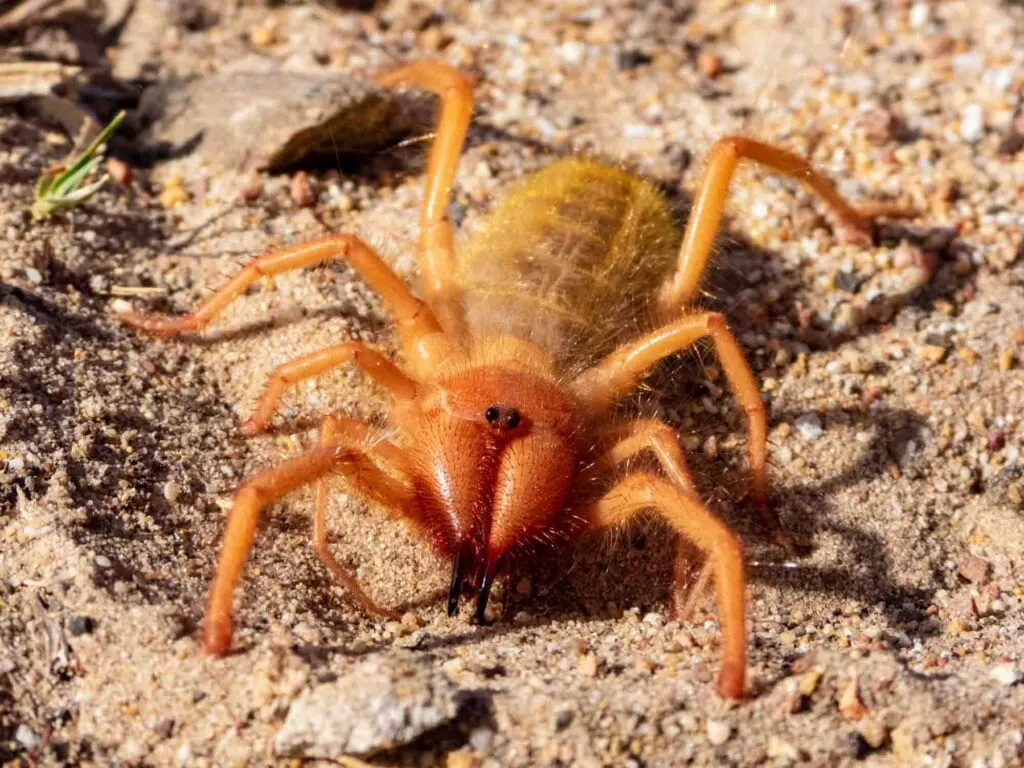
The next on our list of the biggest spiders in the world is the camel spider. These are a group of more than 1000 arachnids most commonly found in the deserts of the Middle East, although they can live in most tropical and temperate deserts around the world.
These arachnids can reach around 6 inches in length and have a rather frightening appearance that has given rise to several myths.
They have powerful jaws that make up a third of their body length, with which they chop their prey into pieces. They are carnivorous, feeding various insects, birds, lizards, and other small animals.
They aren’t venomous and pose no threat to humans. These nocturnal animals are also fast runners and can cover 10 miles in an hour.
Brazilian Wandering Spider: 7-inch leg span
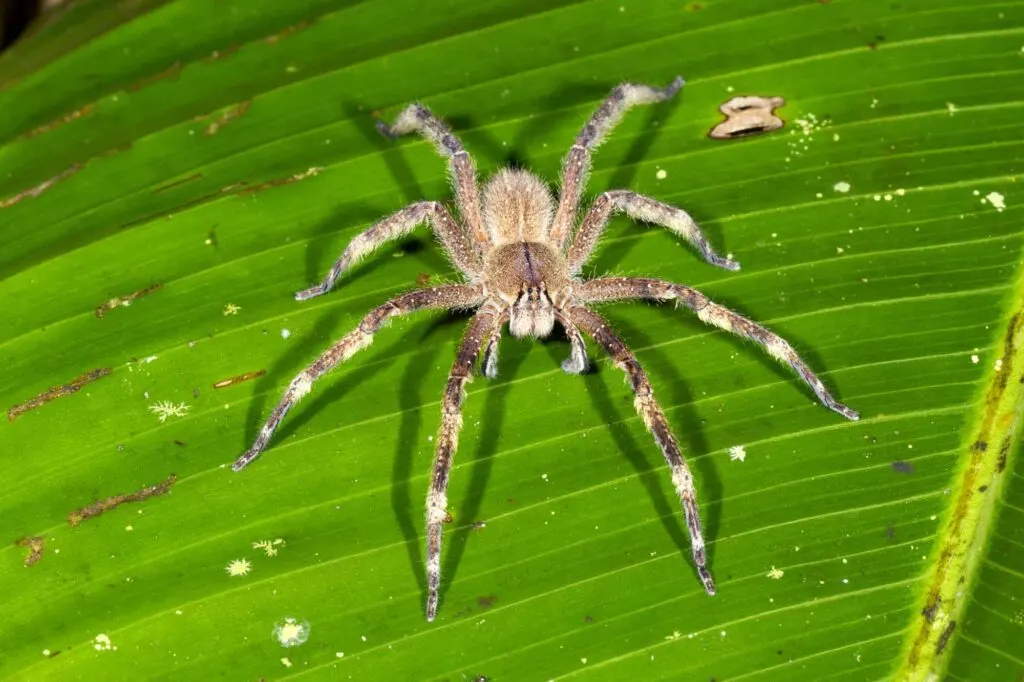
One of the most venomous spiders worldwide, Brazilian wandering spiders (Phoneutria fera) are native to parts of Central and South America. They get this name because of their wandering behavior on the jungle floor rather than spinning a web.
The fangs of these spiders are loaded with toxic venom that is powerful enough to kill humans and is regarded as the most dangerous spider in the world.
A venomous spider often traveled to other continents in banana boxes, which is why they are also called banana spiders.
They are pretty extensive, with bodies reaching around 2 inches and have a leg span of 7 inches. Their color may vary, although brown and gray are the most common.
In addition, some Brazilian wandering spiders may have black, white, or yellow bands under their front legs.
These spiders are nocturnal hunters who wander around the forest floor searching for prey.
Their diet consists of various insects, amphibians, reptiles, and other small animals. They usually live for around 1 to 2 years in the wild on average.
Did you know? The Brazilian wandering spider is on the Guinness Book of World Records as the most venomous spider in the world.
Brazilian Giant Tawny Red Tarantula: 7-inch leg span
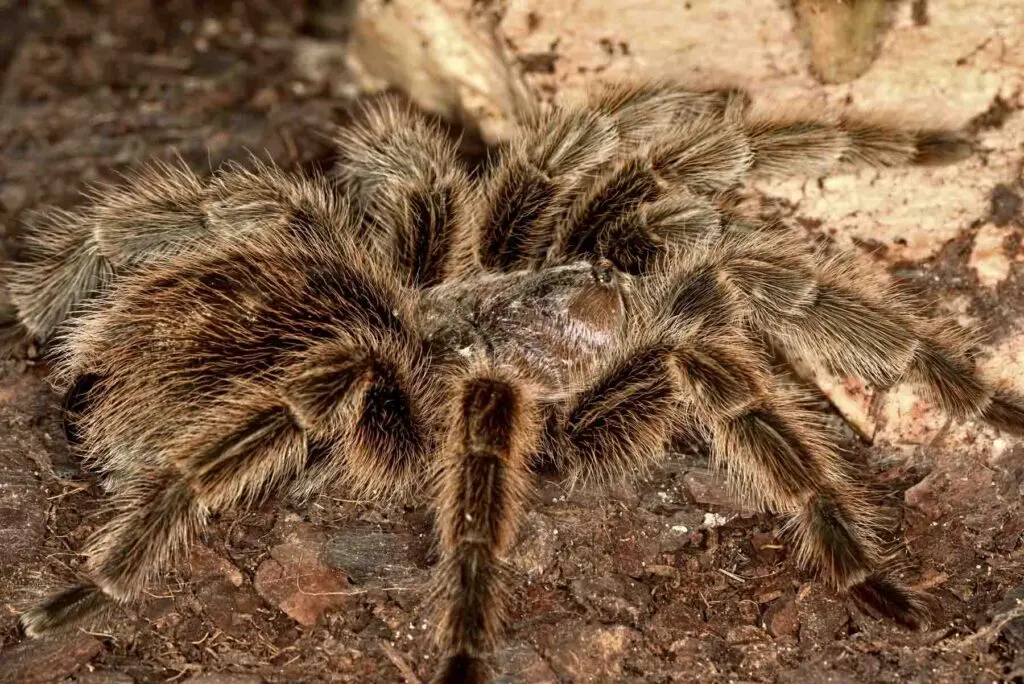
One of the biggest spiders in the world, the Brazilian Giant Tawny Red (Grammostola anthracina) is a tarantula species found in parts of Brazil, Argentina, Uruguay, and Paraguay.
Also known as the Brazilian giant tawny red tarantula, these huge spiders are usually brown and have urticating hairs as a defense mechanism.
These spiders can reach a size of more than 7 inches by adulthood, although females are usually larger than males. However, males have longer legs.
While the spiders belonging to the Grammostola genus are venomous, their venom is typically mild and poses no major threat to humans.
They are usually found inhabiting deserts, grasslands, or scrublands, where they prey on small insects, worms, and lizards.
These spiders can lay close to 500 small and round eggs during the breeding season. Females of the species usually live longer than the males, with their average lifespan over 20 years.
Hercules Baboon Spider: 8-inch leg span
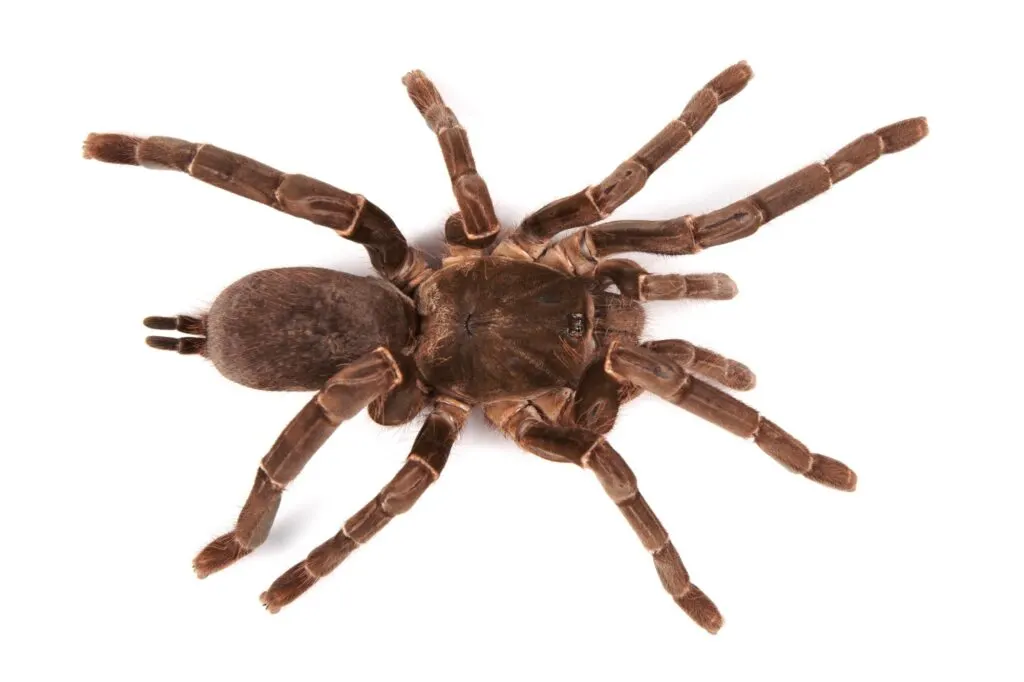
The Hercules baboon spider (Hysterocrates hercules) is native to parts of Africa, where it generally resides within forested areas.
These giant spiders have long legs that resemble a baboon’s fingers, hence the name.
A member of the tarantula family, these spiders are relatively rare, with the last sighting in the wild being decades ago. Still, you can see it in London’s Natural History Museum.
While there is a lack of detailed information on this species due to their rarity, scientists know their leg span is around 8 inches.
These spiders are usually black or brown and live on a diet consisting mainly of bugs, insects, and smaller spiders.
While they are venomous, the Hercules baboon spiders are unlikely to pose any danger to humans. However, these spiders can inflict a bite with their strong fangs when threatened, although it may cause nothing more than mild discomfort for humans.
Face-Sized Tarantula: 8-inch leg span
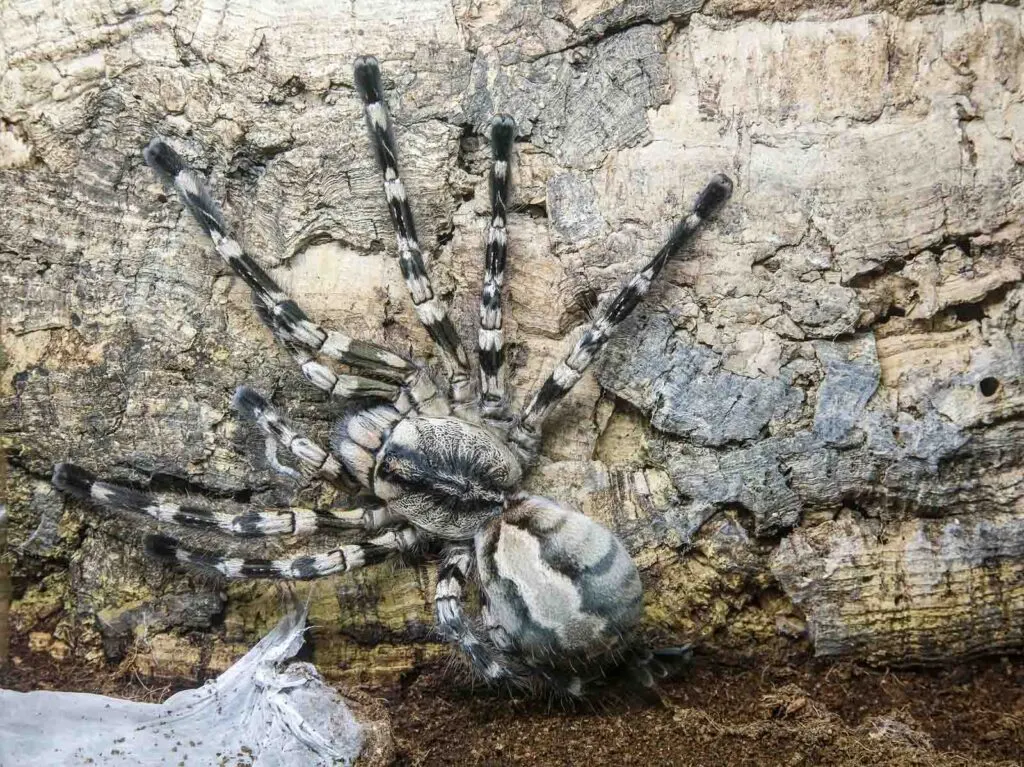
One of the largest spiders in the world, the Poecilotheria rajaei is a huge spider native to Sri Lanka. Also popularly known as the face-sized tarantula, these spiders have a leg span of around 8 inches.
The first specimen of the species was discovered in 2009, after which a survey was conducted. The species was named after a local Sri Lankan police officer in recognition of his efforts in guiding the research team during the search.
These spiders can be distinguished by the distinctive yellow and gray markings on their legs, as well as a pink abdominal band.
While they prefer to reside in tree hollows, loss of habitat has forced them to seek refuge in old buildings, even in residential areas.
While they are venomous, their venom isn’t powerful enough to kill a human, although it can be fatal for smaller animals. The face-sized tarantula usually preys on small snakes, birds, lizards, and rodents.
Colombian Giant Tarantula: 8-inch leg span
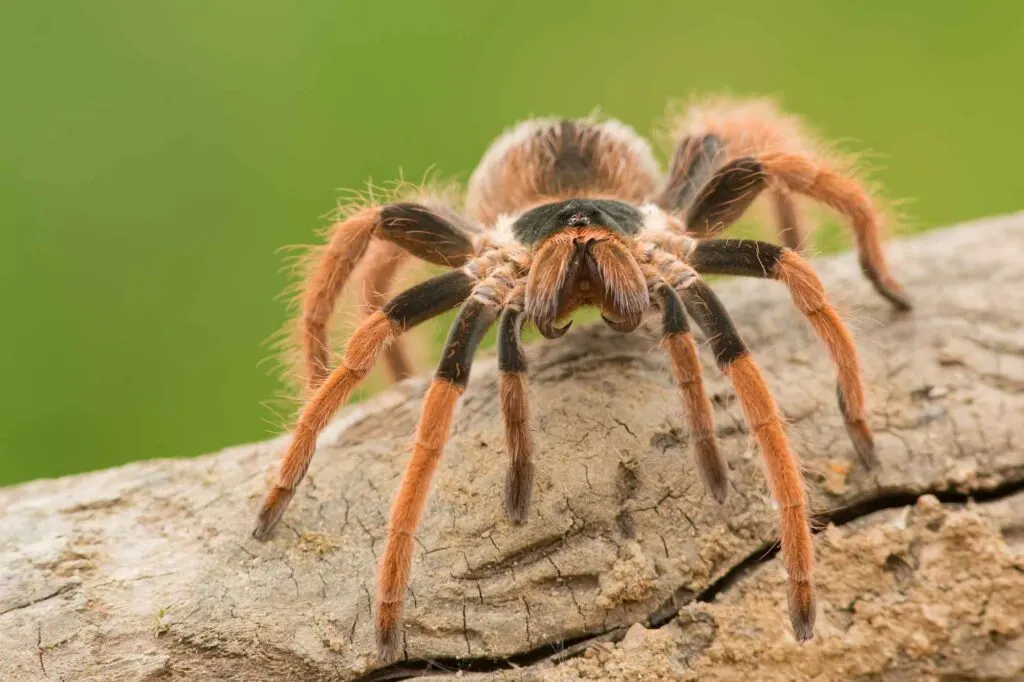
Colombian giant tarantulas (Megaphobema robustum) are native to South America, found in Brazil and Colombia. Also popularly known as Colombian red leg tarantulas, these spiders have a leg span of around 6 to 8 inches.
They are usually found in the tropical rainforests, where they feed on a diet consisting of various giant insects, mice, and lizards. They have brownish bodies and typically live in burrows under the ground.
Usually, they prefer to flee if they sense danger but may also engage in a peculiar defense tactic. For example, the spider may turn around in circles while trying to launch kicks on the threat with a pair of barbed legs.
Chaco Golden-Knee Spider: 8.5-inch leg span
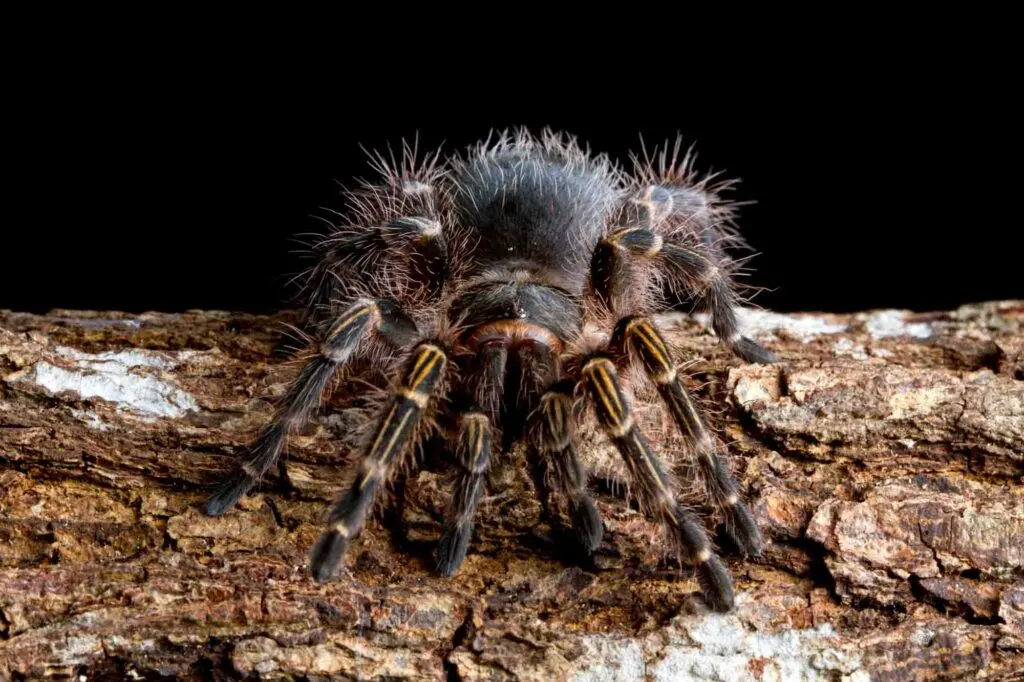
Native to the grasslands of Paraguay and Argentina, Chaco golden-knee (Grammostola pulchripes) is one of the biggest spiders in the world.
These giant spiders belong to the family of tarantulas and can grow to 8.5 inches.
In addition, these terrestrial animals have rather heavy bodies and large, powerful fangs.
The females have comparatively bigger bodies than the males, although the latter have longer legs.
These spiders are usually black or dark brown and have long pinkish hairs covering their bodies. Their name comes from the bright golden-yellow stripes on their legs that give them a striking appearance.
Although they have weak eyesight, they can sense the environment through tiny hair known as setae. Their diet consists mainly of insects and a range of small invertebrates.
While males of this species survive only for up to 6 years, females may often live for 20 or more.
Brazilian Salmon Pink Birdeater Spider: 10-inch leg span
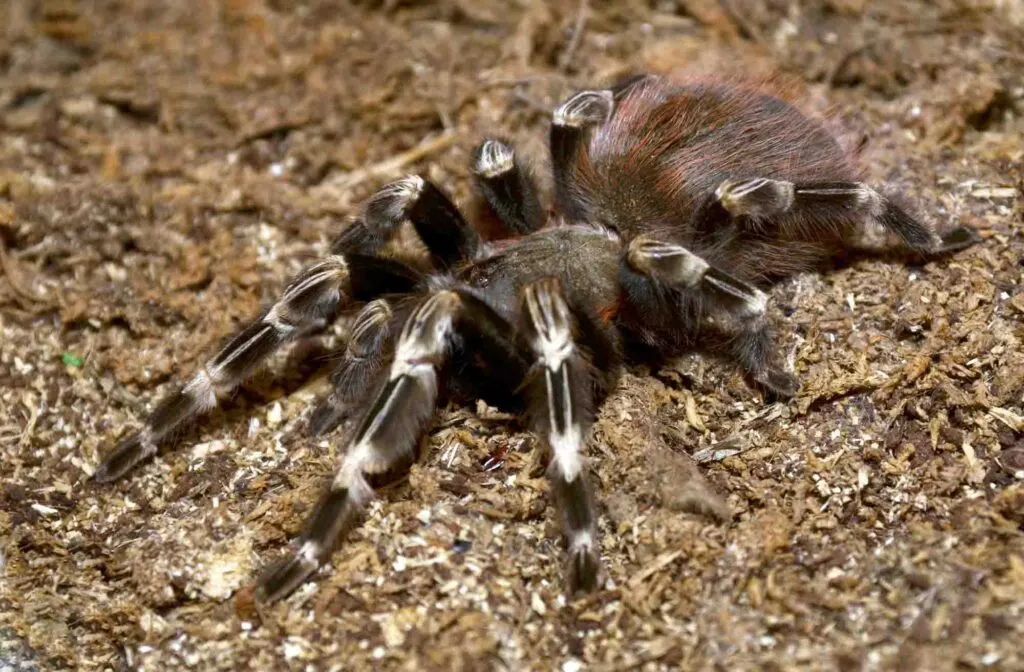
The next on our list of the biggest spiders in the world is the Brazilian salmon pink bird eater (Lasiodora parahybana).
These huge spiders get their name due to the salmon pink hairs on their legs and abdomen. These hairs are rather dangerous and may cause skin irritations in humans.
Native to Brazilian rainforests, they are the third-largest species of tarantula and one of the biggest animals in the world (of their kind, of course).
Adult spiders have grayish-black bodies that may be as long as 7 inches in length, while their leg span is generally between 8 to 10 inches. Their diet consists mainly of insects, amphibians, small birds, and reptiles.
Although their venom is not poisonous for humans, these spiders have one-inch-long fangs and can deliver a painful and powerful bite.
Goliath Birdeater Spider: 11-inch leg span
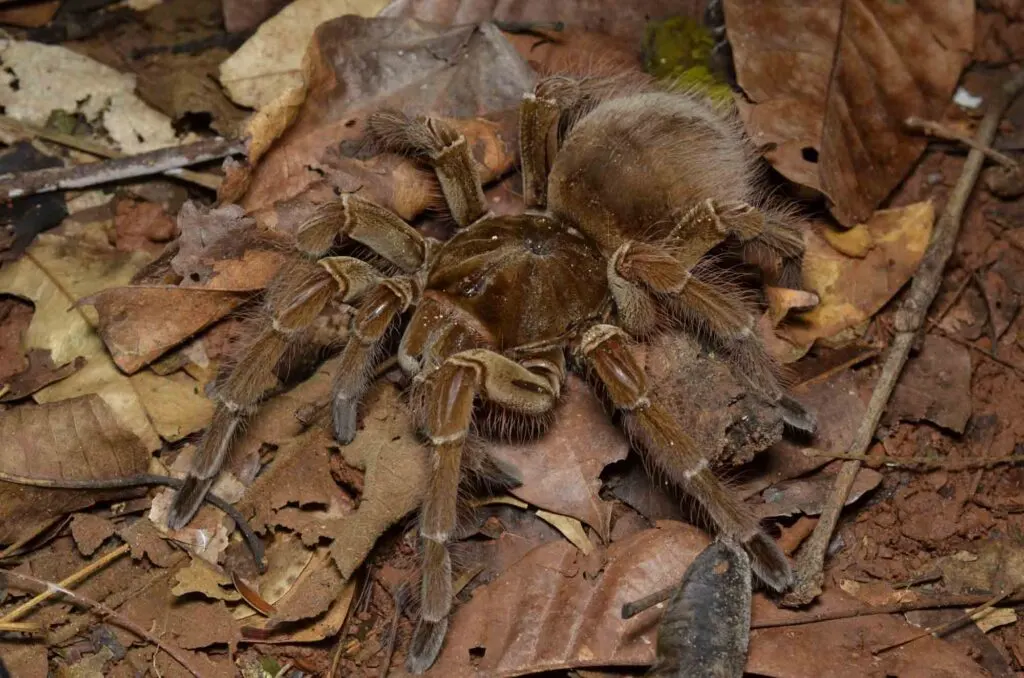
Goliath bird-eating spiders (Theraphosa blondi) are the biggest tarantula species and are native to the rainforests of South America.
Weighing close to 6.2 ounces, the birdeater tarantulas are the heaviest spiders in the world. In addition, they have an enormous leg span of around 11 inches and a body length of up to 5.1 inches.
Unlike their name suggests, these venomous spiders seldom feed on birds. Instead, their diet consists mainly of insects, amphibians, and worms, although they may occasionally feed on small lizards, rodents, and birds too.
They are nocturnal animals and are equipped with several defense mechanisms to protect themselves from predators.
They have two venomous fangs, each as long as 1.5 inches. But, these aren’t too dangerous for humans as the venom is relatively mild.
They also fire barbed hairs at attackers aiming at eyes or skin, causing irritation for days.
Did you know? The biggest spider ever found was a male goliath bird-eating spider found in the Amazon Rainforest, bordering Venezuela. It had a record leg span of 11 inches – sufficient to cover a dinner plate.
Giant Huntsman Spider: 1-foot leg span
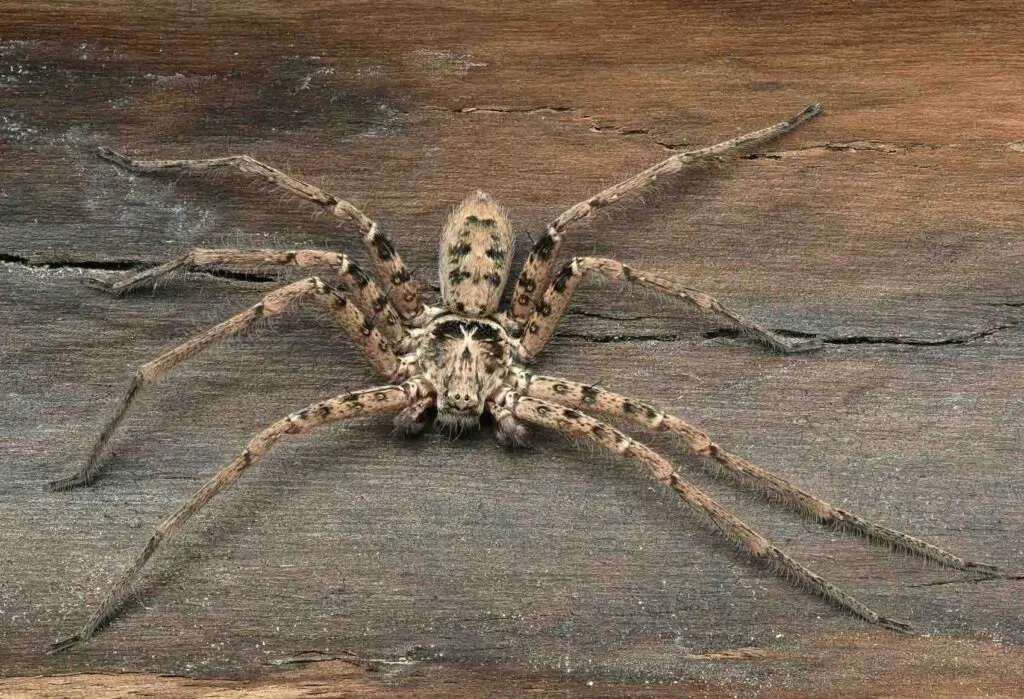
Giant huntsman spiders (Heteropoda maxima) are yellowish-brown with dark spots and markings on the body and legs.
The bodies of these spiders are around 1.8 inches in length. Their legs are often longer than the rest of their bodies, giving them a considerable leg span of about one foot.
These are the biggest spiders in the world by leg span and are often described as giant crab spiders because of their massive size and appearance.
These spiders are native to Laos, where they are believed to reside in caves. They are remarkably swift creatures, named due to their behavior of hunting down their prey.
They capture their prey by injecting it with venom, thereby killing it. The diet of Giant Huntsman spiders consists of insects, frogs, lizards, and other small animals.
Cannibalism has also been observed in the species. Although they can inflict a painful bite, their venom isn’t fatal for humans.
What Is the Largest Spider in the World?
The biggest spider by mass is the goliath birdeater weighing 6.2 ounces. Still, the biggest by leg span is the giant huntsman, whose legs span can reach up to one foot.
Did you get the creeps from reading about the world’s largest spiders? Great! Now share this post on your social media so your friends can learn more about these spiders too!

Felim Brady
Sunday 26th of June 2022
I took a picture of a spider in my shed. It looks like a human. People say I should share this image.how do I do that.
Mike
Wednesday 13th of July 2022
@Felim Brady, Scroll down until you see the square arrow click on it then share.
jayshun
Friday 3rd of June 2022
WOWW